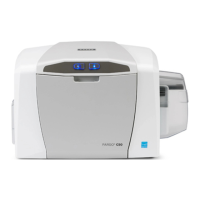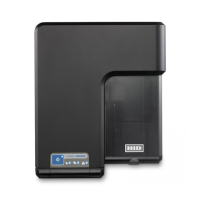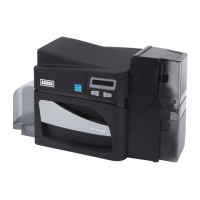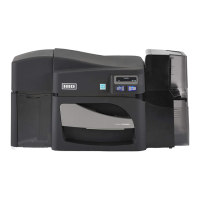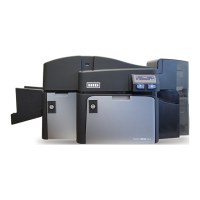5.8 Glossary of terms
Term Definition
Default gateway Specifies the address of the router (in a network using subnets) that forwards traffic to a destination outside
of the subnet of the transmitting device.
DHCP (Dynamic Host
Configuration Protocol)
The protocol used by a network to automatically assign network settings to connected devices so that they
work together.
DNS (Domain Name
System)
Defines the network protocol that allows devices to find IP addresses from a network name server.
DNS domain suffix This is the suffix to be added to the domain name to make a complete name.
DNS server address This is the address of the server that provides the translation from a descriptive name to an IP address.
Guest user A user without rights to change printer settings.
ICMP (Internet Control
Message Protocol)
The basic message protocol for the internet.
IP (Internet Protocol) The network protocol that identifies devices and messages by addresses so that communications can occur
between devices on different local networks.
IP addresses Specifies the current IP addresses that are 32-bit values that are normally expressed in dotted-quad format.
This address must not be the same as another device on the same local network.
MAC (Media Access
Control)
The unique numeric value address associated with a network device that gives the device a unique identity.
This address is assigned by the device manufacturer to ensure its uniqueness.
MIB (Management
Information Base)
A formal description of the way an agent can be accessed using SNMP and the functions that can be
managed.
Network settings The basic network parameters needed to configure the network interface. These include the IP address, the
subnet mask, the default gateway, the DNS server address and the DNS domain suffix.
Ping A common utility or command that sends a message to network devices asking for a return message. This is
used to diagnose if the device is on the network or to troubleshoot the connection.
Root user A user with administrative rights to change any printer settings.
SNMP (Simple Network
Management Protocol)
This is protocol for the network management services. This protocol provides a means for network compliant
devices, called agents, to store data about themselves in Management Information Bases (MIBs) and return
this data to the SNMP requesters.
Subnet mask Specifies a 32-bit value that routers use to send a message to the correct subnet.
Syslog The standard method for logging system events.
TCP (Transmission
Control Protocol)
The network protocol that allows reliable network communications between devices.
TCP/IP Network communications using TCP and IP protocols.
Telnet This is a common terminal emulation program that allows a user to send commands to a TCP/IP connected
device and receive the responses.
UDP (User Datagram
Protocol)
Defines a protocol for sending and receiving messages on a network.
PLT-02931, A.4 107 November 2021
Powering
Trusted Identities
FARGO® HDP®6600 High Definition Card Printer/Encoder
User Guide
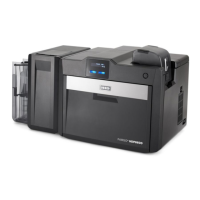
